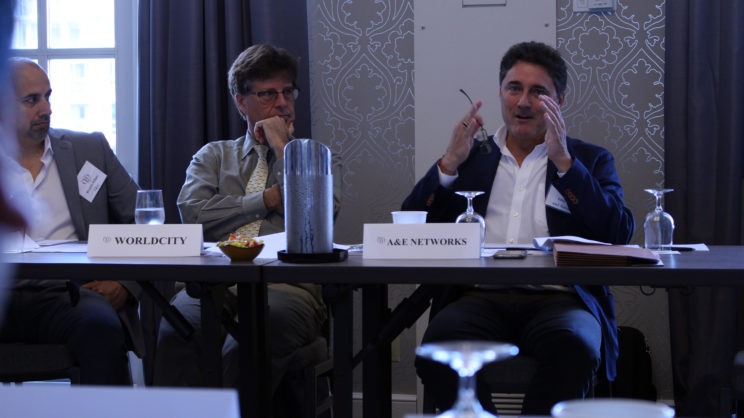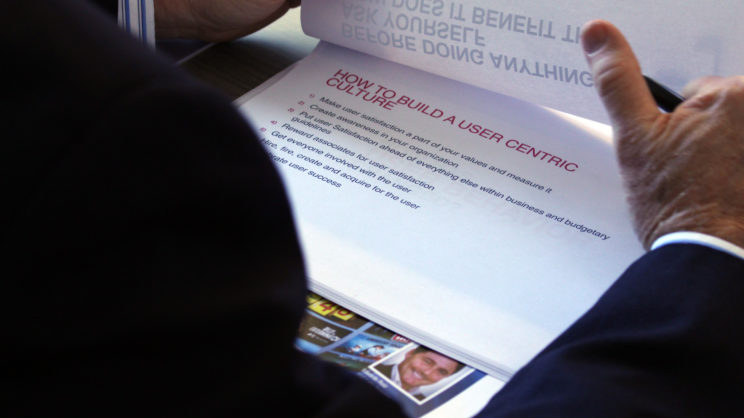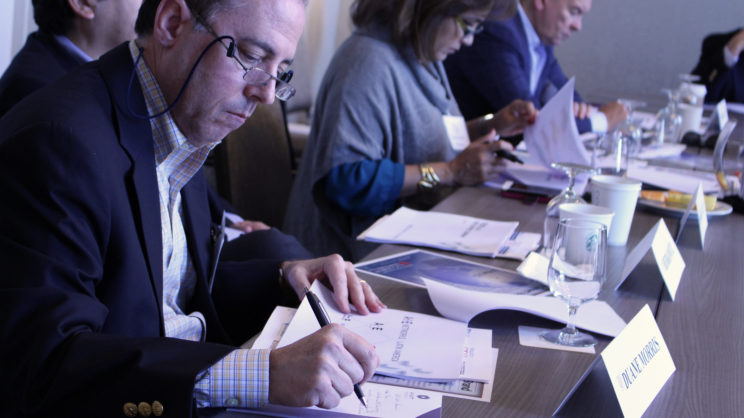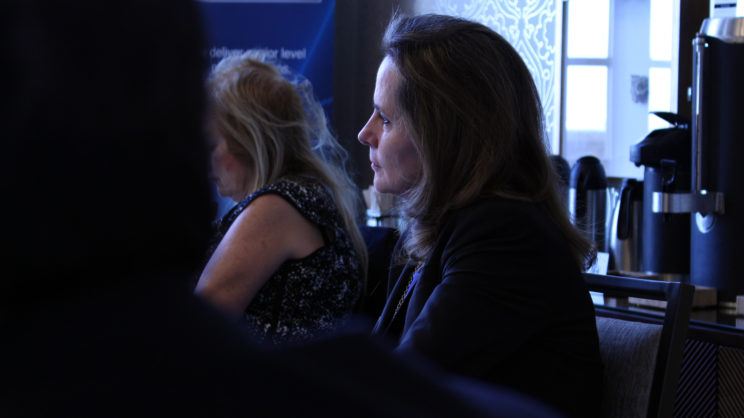Five takeaways from A&E Networks on video consumption
Media companies face a rapidly changing business environment, with increasing challenges and a wide range of opportunities. No one knows that better than Eddy Ruiz, President and General Manager of A&E Networks Latin America, who led the discussion at WorldCity’s exclusive CEO Club gathering on Friday.

Eduardo Ruiz of A&E Networks Latin America speaks at WorldCity’s April CEO Club gathering. See more photos HERE
So, in this day of multiple platforms, multiple devices and multiple measurement systems, Ruiz tries to view all his decisions though this prism:
How does this benefit the user?
“The user is always at the center,” said Ruiz, who said he never imagined that he would one day be consulting with anthropologists to better understand human behavior, as he has now done. The day before his CEO Club presentation, while in Mexico City on a business trip to one of the company’s Latin America offices, he had met with an agency focused on helping companies with innovation.

Tips on how to build a user centric culture from A&E Network’s presentation at April’s CEO Club gathering.
“I was on a plane back from Mexico, reading a book on Google,” Ruiz recounted to the group of executives, who oversee Latin America operations from South Florida. “The first few pages, the first thing it said was that they’re a user-based company. I said, ‘OK, I guess I’m not crazy.’ ”
During his presentation, Ruiz, who has overseen A&E’s operations for 13 years, shared a wide range of industry audience measurements and statistics, sparking plenty of curiosity and questions.
Here are five takeaways from April’s CEO Club on opportunities in disruption:
More devices means more consumption
Ruiz showed the results of a 2015 study by TGI Latina that showed the following hours of consumption per day based on how many devices the user has:
- Own Just TV = 4.2 hours (35% population)
- TV + 1 device = 7.9 hours (44% population)
- TV + 2 devices = 9.3 hours (14% population)
TV still preferred screen across all video categories, except one

Harvey W. Gurland Jr. of Duane Morris (bottom left) reviews statistics from A&E Network’s presentation.
Television is still the preferred screen over cell phone, tablet or computer for the following video formats, according to audience measurement giant Nielsen: sports, news, documentaries, reality shows, comedies, dramas and movies. Among those, the only two under 70 percent were sports (59 percent) and reality shows (48 percent).
The lone exception was short-form videos, where television only accounted for 6 percent, mobile 22 percent, computer 64 percent and tablet 22 percent.
“What is the definition of short-form video?” asked Ricardo Villate, IDC Latin America’s Group Vice President.
“Short form is anything under 5-10 minutes duration,” answered Ruiz.
TV the preferred screen of millennials too
A 2016 Nielsen study on video consumption based on “average audience per minute” — a standard metric — for adults ages 18-34 found 85 percent of video consumption was done through a television screen. In Mexico, that number grew to 90 percent. Broadband availability in Latin America is part of the reason for the high percentages, Ruiz added.
Ruiz also made the important distinction that the results do not necessarily mean all the video consumption is television programming. It could be digital platform content being viewed via a television screen, further driving home the point that for users a bigger screen equals a better experience.
Major digital/social media platforms lagging in average audience per minute
Another study by the independent measurement company comScore showed that Facebook, YouTube, Spotify, Twitter, and Instagram are all way behind in average audience per minute for television programming. Each would rank between No. 100 and No. 120 in ad-supported TV programs.
Ruiz mentioned the Super Bowl earlier this year, the first to also be shown on YouTube. The headlines afterwards were about fantastic numbers for online viewership. That only measured clicks, Ruiz said. When calculated in the same fashion as television viewership, he said, the number shrunk to less than 15,000 vs. millions on television.
Effective engagement still requires emphasis on context
In addition to viewership concerns, the new environment requires consideration of engagement. How long a user is watching and on what device are only two pieces of the puzzle. Effective strategies created from the data generated, with proper context, is the real moneymaker.
Ruiz showed some examples in his presentation to the group. UPS wouldn’t want an ad next to a gruesome news article on body parts being delivered to a Michigan home. McDonald’s wouldn’t want an ad next to an article about rising obesity rates. Toyota wouldn’t want an ad next to an article about a teacher being hit by a car..
In Australia, in fact, a number of companies realized their ads were being shown next to controversial content about terrorism and ISIS. “All the major advertisers suddenly pulled out. You have to protect your brand,” Ruiz said.. “Google has come back on YouTube saying it is implementing a number of filters to make sure the context is appropriate for the advertiser.”
Thanks to our sponsors:
WorldCity’s next CEO Club takes place June 2.
Register today for WorldCity’s World Trade Month Kick-Off Luncheon, taking place May 5.
The next Global Connections is April 21: Luxury Lifestyle Trends in Latin America.


